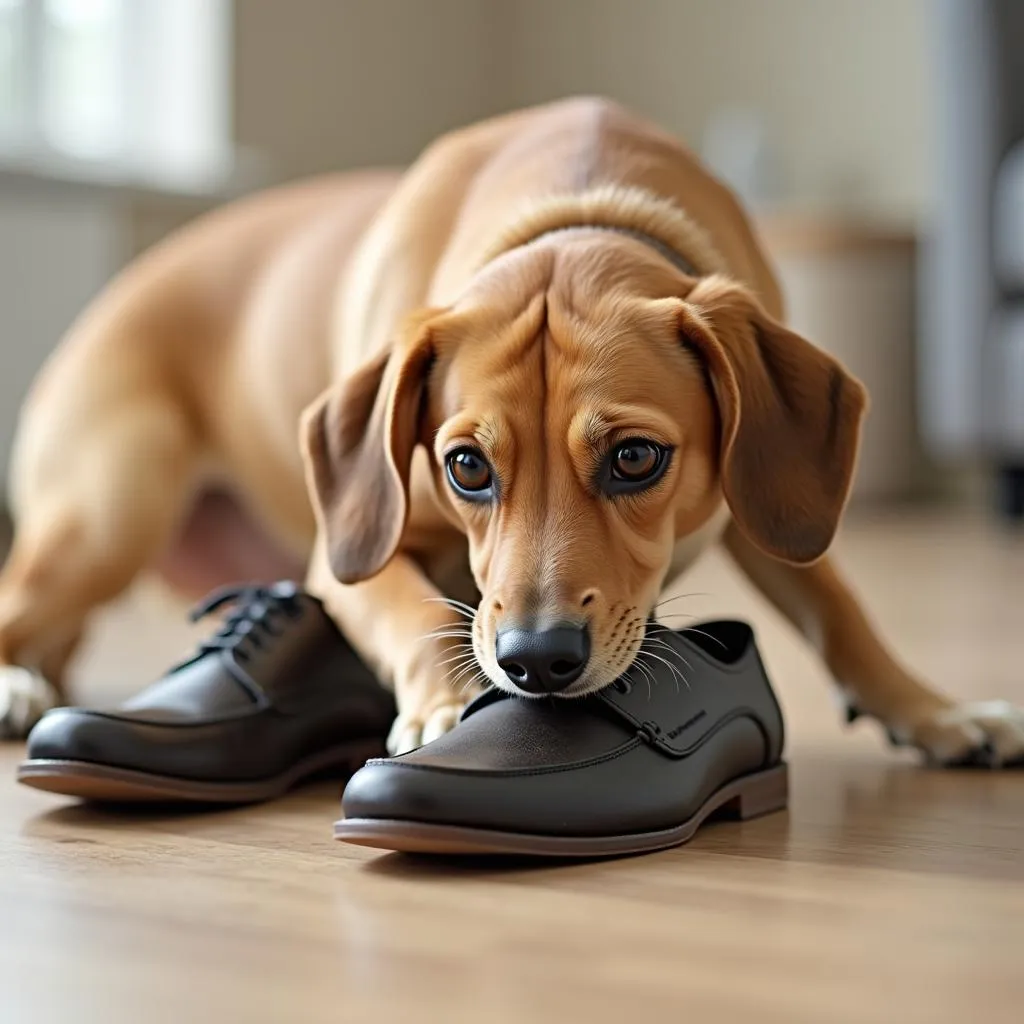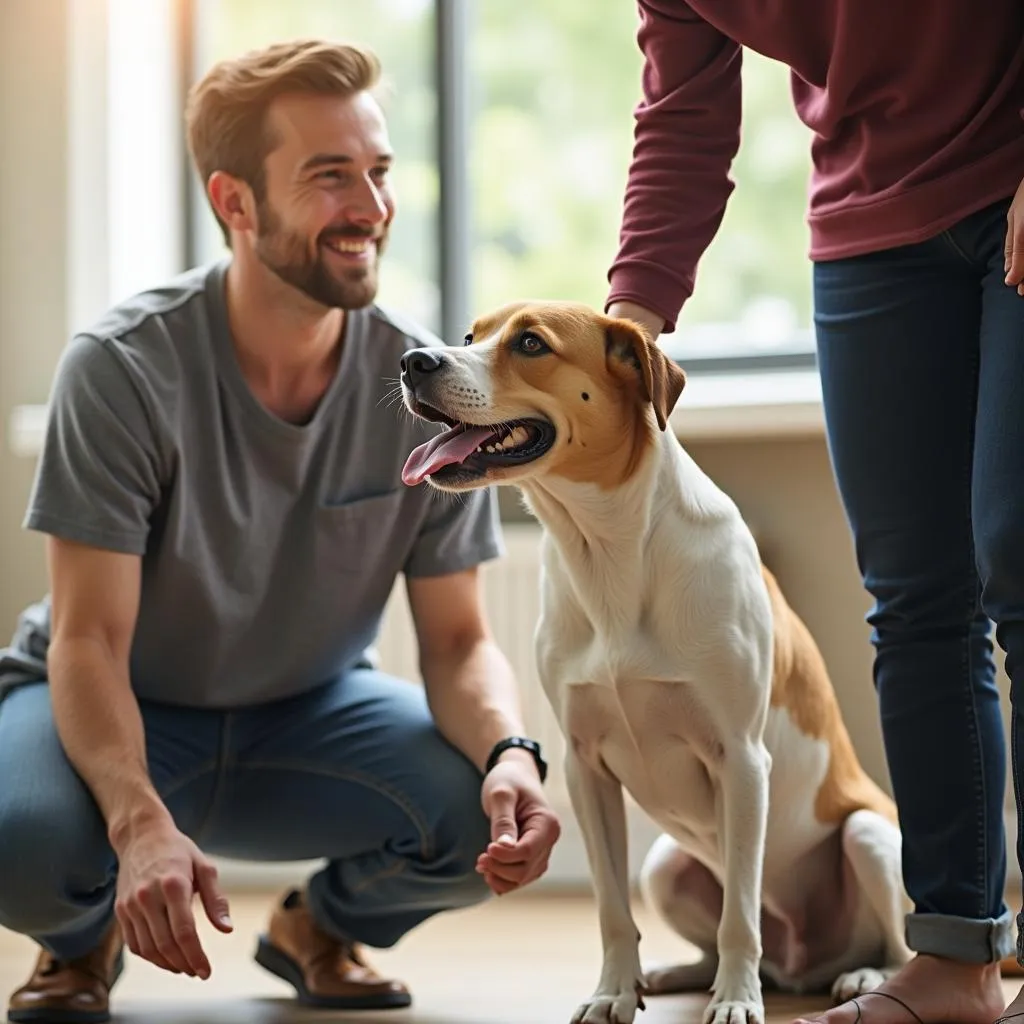“Cái răng cái tóc là góc con người”, and just like humans, dogs can develop some pesky habits that can be quite frustrating for their owners. These “nasty habits” are usually a result of underlying needs that are not being met, or even boredom and stress.
But fret not, fellow pet parents! Just like we can learn to manage our own quirks, understanding the root of these habits can help us address them effectively. Let’s dive into the world of doggy habits and how to navigate them with love and patience.
What Are Some Common Nasty Habits in Dogs?
Every dog is unique, but some common “nasty habits” include:
- Excessive Barking: This can be a real headache! From barking at the mailman to barking at passing cars, excessive barking can be disruptive and even lead to neighborhood complaints.
- Chewing: Oh, the chewed-up shoes, furniture, and other household items! Chewing can be a sign of boredom, anxiety, or even teething in puppies.
- Digging: Whether it’s in the backyard or your prized flower beds, digging can be a real nuisance. Dogs often dig to bury treasures, cool off, or even escape.
- Jumping: Jumping on people can be both embarrassing and potentially dangerous. Some dogs jump out of excitement or to try and get attention.
- Pulling on the leash: A strong pull on the leash can be uncomfortable for both you and your furry friend, and even dangerous if your dog is large or strong.
Why Do Dogs Develop Nasty Habits?
Understanding the underlying reasons behind these behaviors is the key to addressing them. According to Dr. Trần Anh, renowned veterinarian and author of “Understanding Your Dog”, these habits can be caused by several factors:
- Lack of Exercise: Dogs are energetic creatures, and if they don’t get enough physical activity, they may resort to destructive behaviors like chewing or digging.
- Boredom: A bored dog is a naughty dog! Without enough mental stimulation, dogs can get restless and find ways to entertain themselves.
- Anxiety: Separation anxiety, fear of strangers, or even noise phobias can lead to unwanted behaviors like barking, chewing, or digging.
- Lack of Training: Just like humans, dogs need to learn the rules. Proper training can help your dog understand acceptable behavior and make them feel more secure.
How to Address Nasty Habits
Addressing these habits requires patience, consistency, and positive reinforcement. Here are some tips:
- Exercise: Make sure your dog gets plenty of physical activity. This can include walks, runs, playtime, or even agility training.
- Mental Stimulation: Keep your dog’s mind engaged with puzzle toys, interactive games, or even training sessions.
- Training: Use positive reinforcement techniques, such as treats and praise, to teach your dog desired behaviors.
- Address Anxiety: If you suspect your dog has anxiety, consult with a veterinarian or a certified dog trainer. They can help you identify the cause of the anxiety and recommend strategies to manage it.
 Dog chewing shoes and furniture
Dog chewing shoes and furniture
What Can I Do to Stop My Dog from Jumping Up?
Many dog owners struggle with their furry friends jumping up on people. This behavior can be more than just annoying; it can be dangerous, especially if your dog is large or strong. To effectively address jumping, try these tips:
- Ignore the Behavior: When your dog jumps, simply turn your back and ignore them. This will help them understand that jumping doesn’t get them the attention they desire.
- Redirect the Behavior: When your dog sits calmly, offer them praise, treats, or a toy. This will reinforce the desired behavior and make them more likely to sit instead of jump.
- Training: Teach your dog the “sit” command and reward them for staying seated when greeting people.
Can I Stop My Dog from Pulling on the Leash?
A strong pull on the leash can be a real challenge, especially when you’re trying to enjoy a peaceful walk. There are several techniques you can use to help your dog walk calmly on a leash.
- Harness Training: A harness helps distribute pressure evenly across your dog’s chest, making it more comfortable for them and less likely to pull.
- Positive Reinforcement: Reward your dog with treats or praise whenever they walk beside you calmly.
- Stop and Go: If your dog pulls, simply stop walking and wait for them to relax. Once they stop pulling, continue walking and reward them.
- Training Classes: Enrolling in a dog training class can help you learn effective leash-training techniques.
 Dog training class with owner
Dog training class with owner
Nasty Habits and the Spiritual World
In Vietnamese culture, the concept of “duyên” plays a significant role in understanding animal behavior. According to “The Book of Animal Spirits,” authored by Master Thạch, our dogs are connected to us on a deeper level and their behavior can sometimes reflect our own energy. If your dog is exhibiting “nasty habits”, consider if there are any changes in your own life or energy that might be affecting them. Remember, fostering a loving and harmonious connection with your furry friend can create positive change for both of you.
Need Help?
Don’t hesitate to reach out if you’re struggling with your dog’s behavior. We’re here to help! Contact us at [What is the best dog collar to stop barking](https://ilmpet.com/what-is-the-best-dog-collar-to-stop-barking/) or call us at 0372960696. Our team of experienced pet professionals is available 24/7 to provide support and guidance.
Remember, patience, consistency, and positive reinforcement are key to addressing any “nasty habits” your dog may have. With love and understanding, you can create a happy and harmonious relationship with your furry friend.
Leave a Reply
You must be logged in to post a comment.